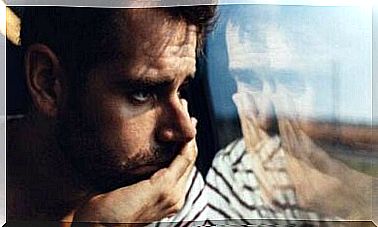The ABC Model Of Depression

Until recently, it was believed from a medical point of view that depression occurs as a result of biochemical imbalances and this is actually not a strange thought at all. In fact, in the so-called endogenous depression, there are indeed imbalances in the level of neurotransmitters. However, this form of depression is rare and is generally a reaction to experiencing a significant loss.
However, if the cause is neither biochemical nor the result of a situation that has arisen, you might ask: What is the cause of that deep sadness that often accompanies depression? The real cause of the depressed emotional state is the mindset, the way the person interprets what is happening through the filter of depression. It is the thoughts that hook the person into this emotional state that causes the depression to last for so long.
But there is good news. Even though we sometimes have no control over the situations that happen to us, we can influence how we interpret them and how we deal with them. Herein lies our responsibility and it is up to us to change our interpretation of the facts.
The ABC model
Albert Ellis, the founder of rational emotive therapy, created the ABC model so that patients would see that it is not the triggering event that causes their emotional discomfort, but their own thoughts and beliefs.

It is worth mentioning that we must distinguish between healthy emotions and unhealthy emotional states. Healthy negative emotions such as sadness, fear or discomfort help us to deal efficiently with what has happened in our lives. They incite us to act through logic and realism.
However, unhealthy emotional states, such as depression, anxiety, guilt or anger, block and paralyze us. Not only do they make it impossible for us to confront the situation, but they also make it worse than it is and put us in a vicious circle from which it is difficult to escape.
It’s normal to feel sad when you lose your job or partner, but it’s not normal if that sadness is excessive, lasts too long and eventually turns into depression. What’s missing is you talking to yourself in a healthy way about the loss.
The ABC model distinguishes between the A (‘activating event’ or activating event), the B (‘belief system’ or the beliefs and thoughts about the event) and the C (‘consequences’ or the consequences: how do I feel? me and how I behave towards the event). In ABC terms we say: not from A follows C, but from B follows C.
Normally we tend to think that it is the situation that is responsible for how we feel, but this is not true and we can easily prove it by looking at the fact that different people have different emotions under the same circumstances.
The black colored B
We can clarify the ABC model of depression in the following way: there is an activator, an A, which corresponds to an important loss, or to another event that has a very powerful influence on us, or with the thoughts, or with that which makes the thoughts or B take on a black color. We tend to see ourselves as useless, the world as a place full of spines and dark clouds, and we may even prefer not to think about the future, because it makes us feel great despair.
These thoughts flood our minds and we believe they are true. We assume that if we think it, it is. This is not how things really are, but our thoughts tend to generalize, to name things at length, to dramatize, etc. And this is precisely why we experience the intense suffering, our emotional C, which we call depression to call.









